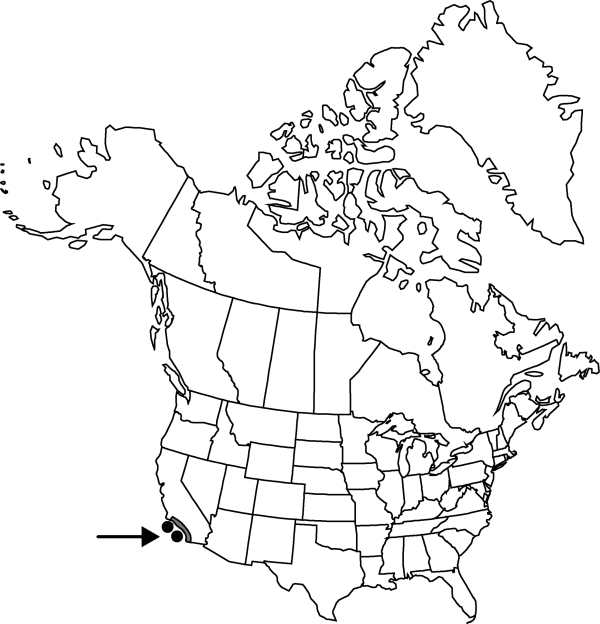Difference between revisions of "Cylindropuntia prolifera"
in C. Backeberg and F. M. Knuth, Kaktus-ABC, 126. 1935.
FNA>Volume Importer |
FNA>Volume Importer |
(No difference)
| |
Revision as of 19:59, 24 September 2019
Shrubs or small trees, erect, 0.6–2.5 m. Stem segments easily detached, whorled or sub-whorled, green-gray, 4–15 × 3.5–5 cm; tubercles prominent, broadly oval, 1.5–2.5 cm; areoles subcircular to obovate, 4–7 × 3–5 mm; wool tan, aging brown to black. Spines 6–12 per areole, in all but proximalmost areoles, spreading, usually deflexed in abaxial ones, pale red-brown to dark brown, acicular, the longest to 2 cm; sheaths pale yellow-brown, shiny. Glochids in adaxial crescent and few along margin of areole, yellow to brown, 0.5–2.5 mm. Flowers: inner tepals rose to magenta, to 20 mm; filaments yellow-green to distally tinted pink to magenta; anthers yellow, sometimes bearing stigma-tipped, stylelike appendages; style greenish yellow to often pink distally; stigma lobes yellow to white. Fruits usually sterile, often proliferating into short erect chains of 2–5 fruits, green, broadly ovoid to top-shaped, 21–25(–35) × 20–32 mm, fleshy, smooth to shallowly tuberculate, spineless; umbilicus broadly shallow, 5–7 mm deep; areoles (20–)25–35. Seeds rare, globose; girdle smooth. 2n = 22, usually 33.
Phenology: Flowering spring (Apr–Jul).
Habitat: Ocean bluffs, inland coastal sage flats, hills
Elevation: to 300 m
Distribution

Calif., Mexico (Baja California).
Discussion
Cylindropuntia prolifera is of hybrid origin; it occupies a habitat different from its putative parents, C. alcahes (F. A. C. Weber) F. M. Knuth and C. cholla (F. A. C. Weber) F. M. Knuth, two Mexican species.
Selected References
None.